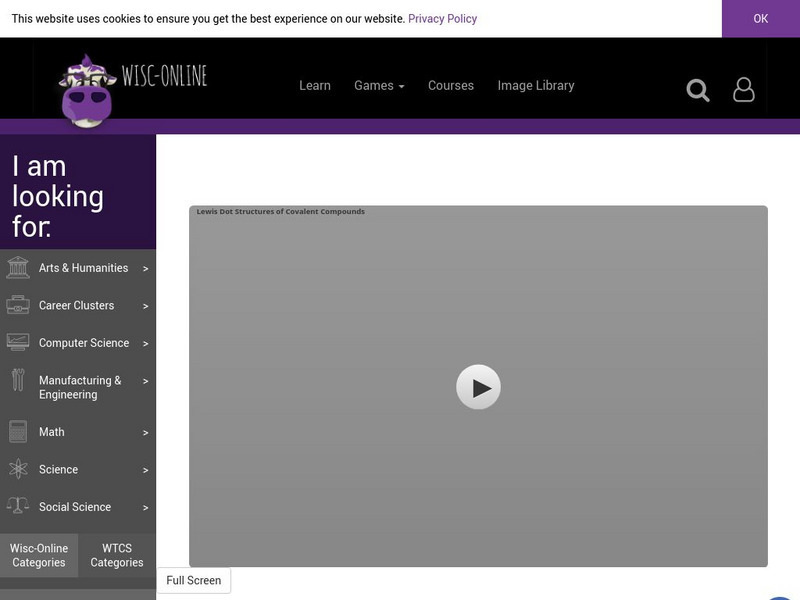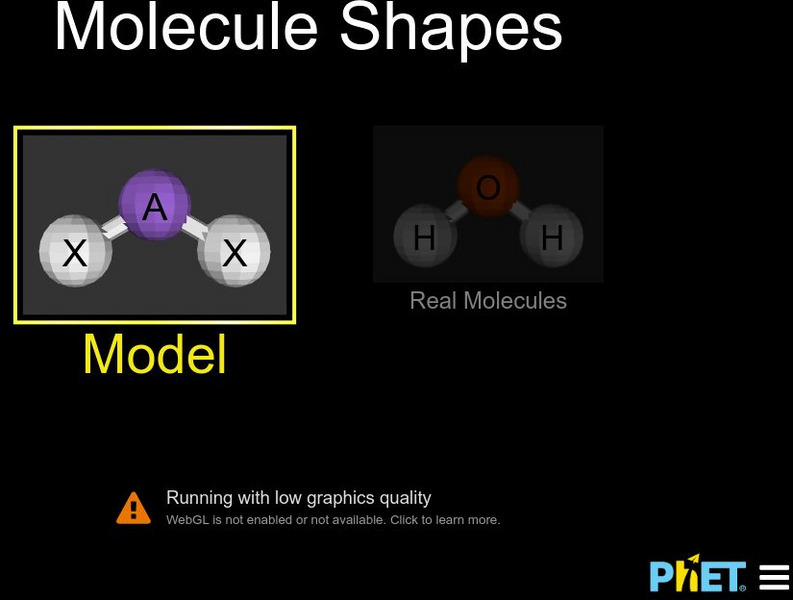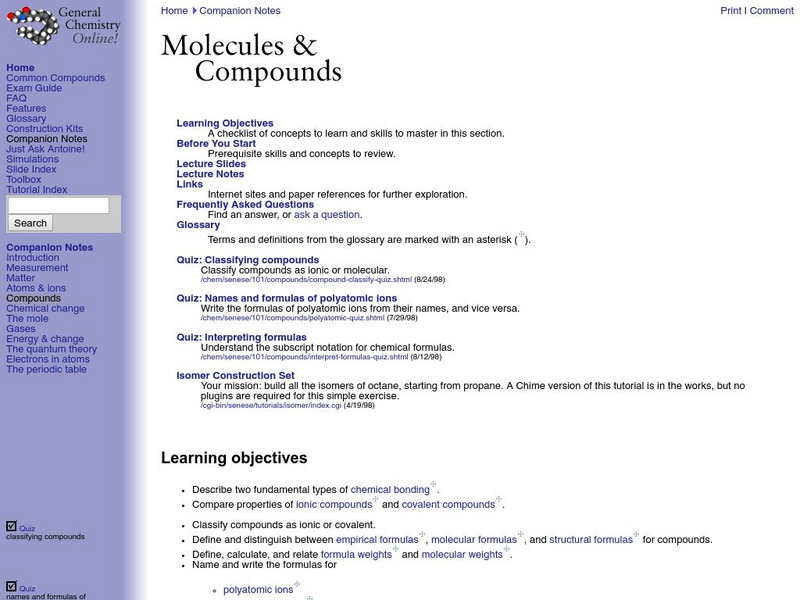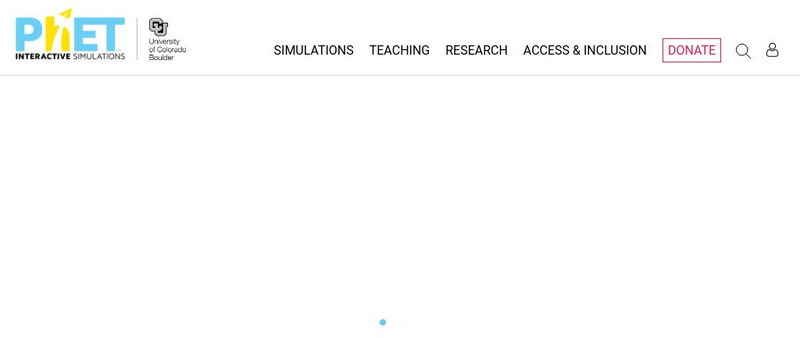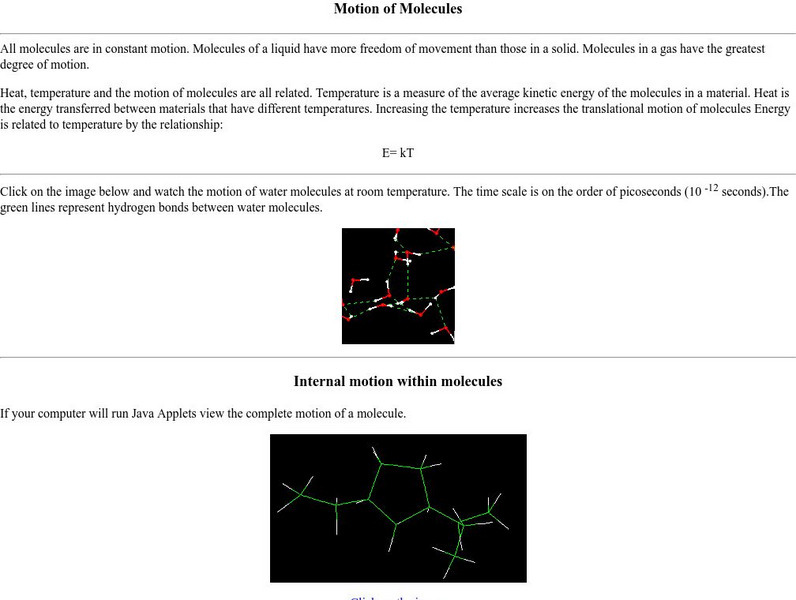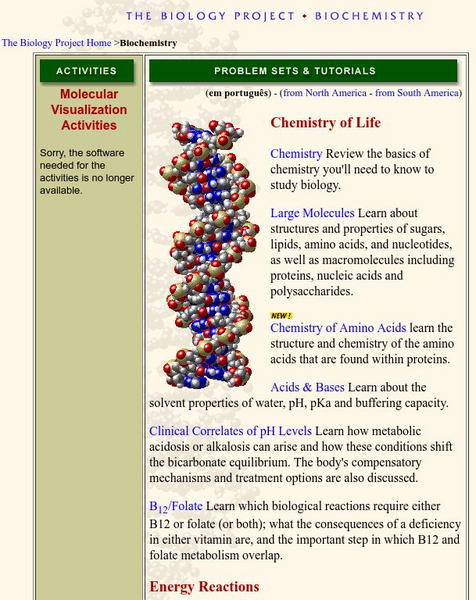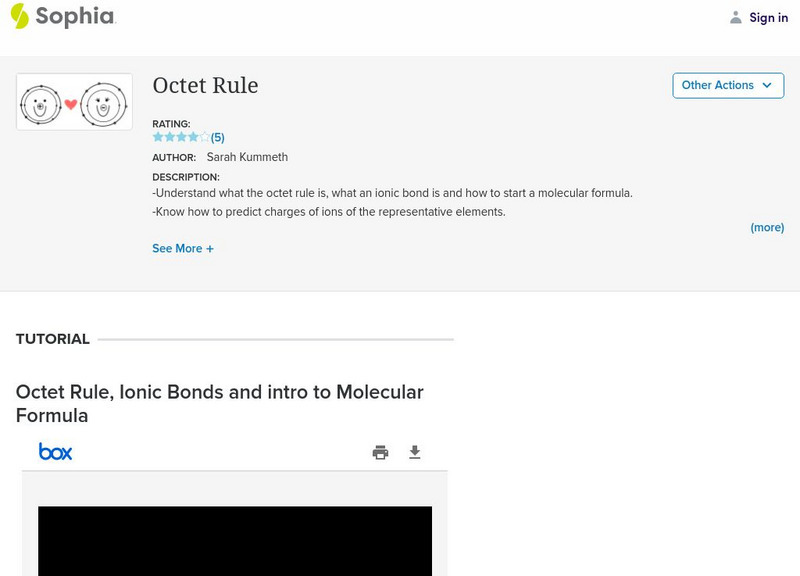CK-12 Foundation
Ck 12: Lewis Electron Dot Structures
[Free Registration/Login may be required to access all resource tools.] The following online tutorial describes how a covalent bond forms, including the energy change involved in the process.Students will be asked to use the octet rule...
NBC
Nbc Learn: Chemistry of Pumpkin Pie
Most recipes for Thanksgiving pumpkin pies call for clove and nutmeg - two distinct spices that come from two nearly identical molecules: eugenol and isoeugenol. "The Chemical Bond Between Cloves and Nutmeg" explains how the strength and...
Wisc-Online
Wisc Online: Lewis Dot Structures of Covalent Compounds
Short slide show provides basic information about drawing Lewis dot structures for covalent compounds. Starts with anatomy of the atom, and then shows the relationship between atomic particles and the Periodic Table of Elements. Offers...
University of Colorado
University of Colorado: Ph Et Interactive Simulations: Molecule Shapes
Build a molecule in 3-D. Add single, double, and triple bonds, or a lone pair of electrons to an atom, learn what the molecule's geometric name is, see the bond angles, and manipulate each molecule to view it from all sides. Then study a...
Frostburg State University
General Chemistry Online: Molecules and Compounds
A complete lesson on compounds, from introductory material in the beginning to a practice exam at the end. This lesson covers bonding, ionic compounds, molecular compounds, naming compounds, structural formulas, polyatomic ions, and much...
University of Colorado
University of Colorado: Ph Et Interactive Simulations: Molecule Shapes
Explore molecule shapes by building molecules in 3D. How does molecule shape change with different numbers of bonds and electron pairs? Find out by adding single, double or triple bonds and lone pairs to the central atom. Then, compare...
Concord Consortium
Concord Consortium: Molecular Workbench: How Chemical Reactions Happen
View this collection of simulations to gain a better understanding of how chemical reactions happen.
Concord Consortium
The Concord Consortium: Molecular Workbench: Seeing Chemical Equilibrium
Observe a visual representation of the equilibrium of products and reactants in chemical reactions. Record data while the reactions are taking place and print out a report afterwards.
Sophia Learning
Sophia: Polarity of Molecular Compounds: Lesson 2
This lesson will demonstrate how to use molecular shape to determine if a molecule is polar or nonpolar. It is 2 of 2 in the series titled "Polarity of Molecular Compounds."
CK-12 Foundation
Ck 12: Molecular Compounds
[Free Registration/Login may be required to access all resource tools.] Students investigate compounds, and learn the ways in which molecules are named.
Concord Consortium
The Molecular Workbench Database: Chemical Reactions and Stoichiometry
This simulation helps students investigate the basics of chemical equations. Students will review stoichiometry and what effects their reaction rates.
Concord Consortium
Concord Consortium: Molecular Workbench: Van Der Waal Bonds and Duct Tape
Adjust the peeling force in this simulation to see how the van der Waals bonds break while peeling a piece of duct tape off of a surface.
ClassFlow
Class Flow: Ionic Bonding & Ionic Compounds
[Free Registration/Login Required] Ionic Bonding & Ionic Compounds - Objective - compare and contrast chemical formulas for ionic & molecular compounds.
Towson University
Towson University: Shapes of Molecules
This chemistry class printout details the main points of molecular geometry and explains bond hybridization and bond angles.
American Chemical Society
Middle School Chemistry: Temperature and Rate of a Chemical Reaction
Watch molecules collide with enough energy that bonds break and form new bonds in a chemical reaction.
State University of New York
State University of New York: Determining Molecular Polarity
The following module illustrates a method for determining if a molecule is polar or nonpolar.
Simon Fraser University
Chem1 Virtual Textbook: States of Matter [Pdf]
Through a series of five related sections, this 24 page pdf file examines a range of topics associated with states of matter including physical interactions between molecular units, bonding within molecular units, molecular units of...
American Chemical Society
Middle School Chemistry: Lesson Plans: Why Does Water Dissolve Salt?
Students use their own model of a salt crystal and water molecule to show how water dissolves salt. Then, they relate their observations to the structure of salt, water, and alcohol on the molecular level.
Davidson College
Davidson College: Valence Shell Electron Pair Repulsion (Vsepr) Model
Presents examples of molecules that do not match the expected bond angles in the Valence-Shell Electron-Pair Repulsion Model. Requires Java.
New York University
Nyu: Math Mol: Motion of Molecules
Examine the link between molecular motion and energy. Observe the movement of a molecule at room temperature. Learn about the different types of molecular motion.
Curated OER
Simon Fraser University: Molecules and the Properties of Bonded Atoms
Drawing of sucrose molecule -- table sugar. Colors show negative electrical potential on its molecular surface.
University of Arizona
University of Arizona: Biochemistry
Problem sets, tutorials, and activities related to biochemistry.
University of Colorado
University of Colorado: Ph Et Interactive Simulations: Molecule Shapes: Basics
Explore molecule shapes by building molecules in 3D. Find out how a molecule's shape changes as you add atoms to a molecule.
Sophia Learning
Sophia: Octet Rule
Learn about the octet rule and ionic bonds in this slide show presentation. Then find out how to start a molecular formula.




